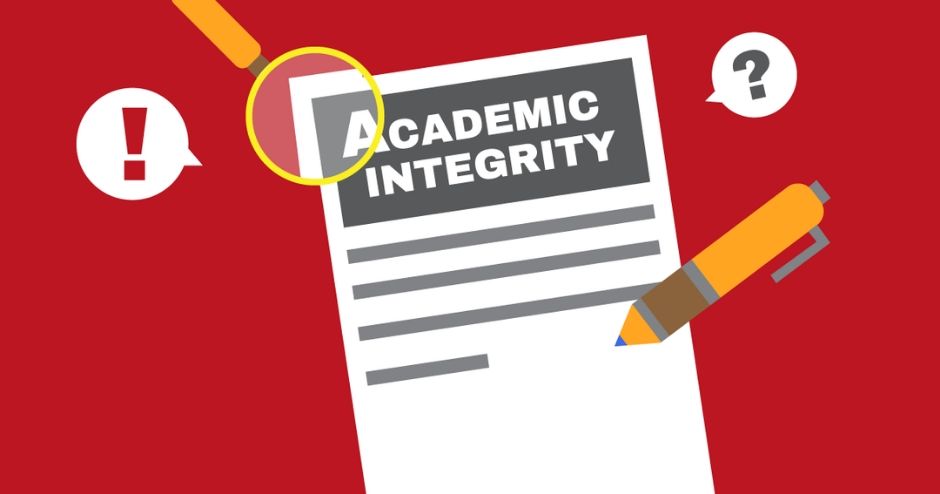Academic integrity is the foundation of a fair and ethical education system. It ensures that students, educators, and institutions uphold honesty, trust, and responsibility in learning and research. Without it, the value of education diminishes, and the credibility of academic achievements becomes questionable.
In a world where technology has made information more accessible, issues like plagiarism, cheating, and falsification of research are becoming more prevalent. However, maintaining academic integrity is not just about preventing misconduct—it is about instilling lifelong values of honesty and ethical decision-making.
In this guide, we will explore:

- What is academic integrity, and why is it important?
- Common violations of academic integrity.
- The consequences of academic dishonesty.
- Strategies for promoting honesty in education.
- The role of technology in academic integrity.
1️⃣ What Is Academic Integrity?
Academic integrity refers to the ethical principles that guide learning, teaching, and research. It means being honest in:
- Completing assignments (without cheating or unauthorized help).
- Conducting research (without falsifying data).
- sources properly (to avoid plagiarism).
- Respecting others’ intellectual property.
📌 Core Principles of Academic Integrity (According to the International Center for Academic Integrity – ICAI):
- Honesty – Be truthful in all academic work.
- Trust – Build a culture where fairness is valued.
- Fairness – Ensure equal opportunities for all students.
- Respect – Acknowledge and credit others’ contributions.
- Responsibility – Be accountable for personal actions.
- Courage – Stand up against academic dishonesty.
📌 Why It Matters: A strong commitment to academic integrity builds critical thinking, problem-solving, and ethical decision-making skills—qualities essential for success beyond the classroom.
2️⃣ Common Violations of Academic Integrity
Many students unknowingly commit academic dishonesty due to lack of awareness or pressure to succeed. Below are the most common types:
📖 1. Plagiarism (Using Someone Else’s Work Without Proper Credit)
- Copying text or ideas from books, articles, or the internet without citation.
- Submitting someone else’s paper as your own.
- Paraphrasing improperly without proper attribution.
📌 Example: Copying a Wikipedia paragraph into an essay without citing the source.
📝 2. Cheating (Using Unauthorized Help on Assignments or Exams)
- Copying answers from another student’s test or assignment.
- Using notes or online resources in a closed-book exam.
- Getting someone else to take a test on your behalf.
📌 Example: Using a smartphone to Google answers during an exam.
📊 3. Fabrication (Falsifying Data or Research)
- Making up fake sources or citations.
- Altering experimental results to fit a hypothesis.
- Misrepresenting work experience or academic achievements.
📌 Example: Submitting a science experiment report with results that were never actually tested.
📩 4. Unauthorized Collaboration & Contract Cheating
Working with others on assignments meant to be done individually.
Paying a third party or online service to write an essay or take a test.
📌 Example: Hiring a freelancer to complete a college essay.
3️⃣ Consequences of Academic Dishonesty
Academic dishonesty can have serious consequences, affecting both individuals and institutions.
❌ Consequences for Students
- Failing the assignment or course – Many universities give automatic zeroes for academic misconduct.
- Academic probation or suspension – Multiple offenses can result in disciplinary action.
- Loss of scholarships or admissions – Schools may revoke scholarships if students violate integrity policies.
- Damage to reputation – Future employers and universities may question a student’s credibility.
📌 Example: Harvard University revoked the admissions of students involved in plagiarism scandals.
🏫 Consequences for Educational Institutions
Loss of credibility – Schools with high cheating rates may struggle with accreditation.
Decline in academic standards – Encouraging dishonesty lowers the quality of education.
Legal consequences – Universities that fail to enforce academic integrity may face lawsuits.
📌 Example: Degree fraud scandals have led to institutions revoking diplomas and re-evaluating academic policies.
4️⃣ Strategies for Promoting Academic Integrity
Educational institutions must create a culture that values honesty and accountability. Here are effective strategies:
✅ 1. Educating Students on Ethical Practices
Teach proper citation techniques to prevent unintentional plagiarism.
Offer academic integrity workshops or online courses.
Emphasize the importance of originality and independent thinking.
📌 Example: Some universities require students to take plagiarism awareness tests before submitting papers.
✅ 2. Implementing Honor Codes & Integrity Pledges
Many universities have honor codes that students must sign.
Pledges create a sense of accountability before exams and assignments.
📌 Example: Stanford University’s Honor Code requires students to pledge honesty in all academic work.
✅ 3. Using Plagiarism Detection Software
Tools like Turnitin, Grammarly, and Copyscape detect plagiarism.
AI-powered software can flag contract cheating and ghostwriting services.
📌 Example: Many universities require students to submit papers through Turnitin before grading.
✅ 4. Designing Assignments That Discourage Cheating
Use open-ended questions that require critical thinking instead of rote memorization.
Assign oral presentations, portfolios, or project-based assessments instead of standard essays.
📌 Example: Some schools use reflective essays instead of traditional research papers to assess independent thought.
✅ 5. Strengthening Faculty & Peer Monitoring
Professors and students should report suspected cases of dishonesty.
Schools should have clear, fair disciplinary actions for violations.
📌 Example: In peer-reviewed research, co-authors cross-check data to prevent fabrication.
5️⃣ The Role of Technology in Academic Integrity
Technology is a double-edged sword—it makes information more accessible but also enables academic misconduct. Institutions must adapt to new challenges while leveraging technology for integrity enforcement.
Challenges from Technology:
- AI-Generated Essays – Tools like ChatGPT can produce essays, making plagiarism harder to detect.
- Cheat Websites & “Essay Mills” – Online platforms offer pre-written assignments for purchase.
- Smartphone Cheating – Hidden earbuds and smartwatch apps can be used to cheat in exams.
Technology-Based Solutions:
- AI-Powered Plagiarism Detection – Advanced tools now detect AI-generated content.
- Proctoring Software – Programs like Proctorio and ExamSoft monitor online exams with webcams.
- Blockchain for Academic Records – Some universities use blockchain to securely verify degrees and transcripts.
Example: Universities are developing AI-powered plagiarism detectors to recognize content written by artificial intelligence tools.
Conclusion: Building a Culture of Academic Integrity
Academic integrity is more than just avoiding plagiarism or cheating—it is about upholding honesty, trust, and fairness in education. Institutions, educators, and students must work together to create a culture of ethical learning where knowledge is valued, and success is achieved through genuine effort.
💬 What are your thoughts on academic integrity? Have you encountered challenges or strategies that worked? Share your experiences below! 🎓📖✨


